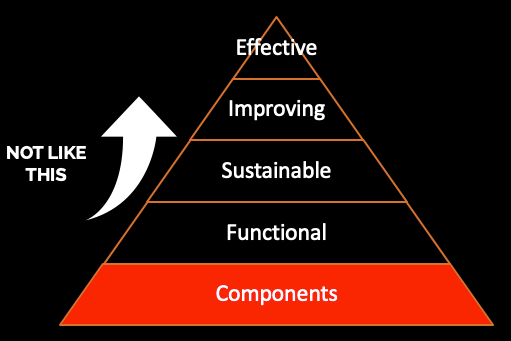ERP vs GRC: Feed-Forward vs Feed-Back Systems
- Raimund Laqua

- Jun 11, 2025
- 3 min read
The distinction between Enterprise Resource Planning (ERP) and Governance, Risk, and Compliance (GRC) platforms reveals a fundamental difference in operational philosophy that has significant implications for organizational effectiveness. While both systems aim to ensure organizational obligations are met, they approach this goal from opposite directions.

ERP: The Feed-Forward Compliance System

ERP systems exemplify feed-forward compliance architecture. They are operational systems designed around planning, forecasting, and ensuring product delivery by orchestrating all necessary resources at the right time, with the right specifications, and through the right processes. This forward-looking approach means ERP systems actively prevent problems before they occur.
The feed-forward nature of ERP manifests in several ways. Production planning modules ensure materials are ordered and available before manufacturing begins. Financial planning components forecast cash flow needs and trigger procurement decisions. Human resource modules anticipate staffing requirements and initiate hiring processes. Each function is designed to identify requirements and deploy resources proactively, creating a continuous cycle of planning, execution, and adjustment that keeps operations flowing smoothly.
GRC: The Feed-Back Compliance System

In contrast, most GRC platforms operate as feed-back systems, focusing primarily on reporting and monitoring what has already occurred. These systems are fundamentally reactive rather than proactive, concentrating on audits, compliance reporting, and risk assessment after events have transpired. While this backward-looking approach provides valuable insights for accountability and learning, it often fails to prevent compliance failures or operational disruptions.
The feed-back nature of traditional GRC systems creates inherent limitations. By the time a compliance violation is detected and reported, the damage may already be done. Risk assessments become exercises in documenting past failures rather than preventing future ones. Governance frameworks become bureaucratic reporting mechanisms rather than operational guidance systems that actively steer organizational behavior.
The Operational Gap
What becomes apparent when examining many GRC implementations is that they are not operational in the systems sense of the word. They lack the forward-looking, resource-orchestrating capabilities that make ERP systems effective operational tools.
Instead of ensuring continuous meeting of obligations through proactive planning and resource allocation, GRC platforms often become elaborate documentation and reporting systems that react to problems after they manifest.
This reactive posture explains why many organizations struggle with GRC effectiveness. When compliance and risk management are treated as reporting functions rather than operational imperatives, they become disconnected from the daily flow of business activities.
The result is often a compliance program that exists parallel to, rather than integrated with, actual business operations.
A Path Forward: Operational Compliance

GRC would benefit significantly from adopting more ERP-like characteristics.
An Operational Compliance system would function as a feed-forward compliance engine, using planning and forecasting to ensure all obligation requirements and commitments are met, risks are mitigated before they materialize, and governance objectives are achieved through proactive resource allocation and process design.
Such a system would anticipate compliance deadlines and automatically trigger necessary actions, allocate resources for risk mitigation activities before threats become critical, and integrate governance requirements directly into operational workflows.
Instead of asking "Are we in compliance?" an Operational Compliance system would continuously ask "How do we meet all our obligations in the presence of uncertainty?”
What's Next?
The fundamental difference between feed-forward ERP systems and feed-back GRC platforms reflects deeper philosophical approaches to organizational management.
While ERP systems actively shape future outcomes through proactive planning and resource orchestration, traditional GRC platforms remain trapped in reactive reporting cycles. Organizations seeking more effective governance, risk management, and compliance outcomes should consider how to make their GRC capabilities more operational and forward-looking, drawing inspiration from the proven effectiveness of ERP system design principles.
The most successful organizations will be those that transform GRC from a backward-looking reporting function into a forward-looking operational capability that actively ensures continuous compliance and proactive risk management.


